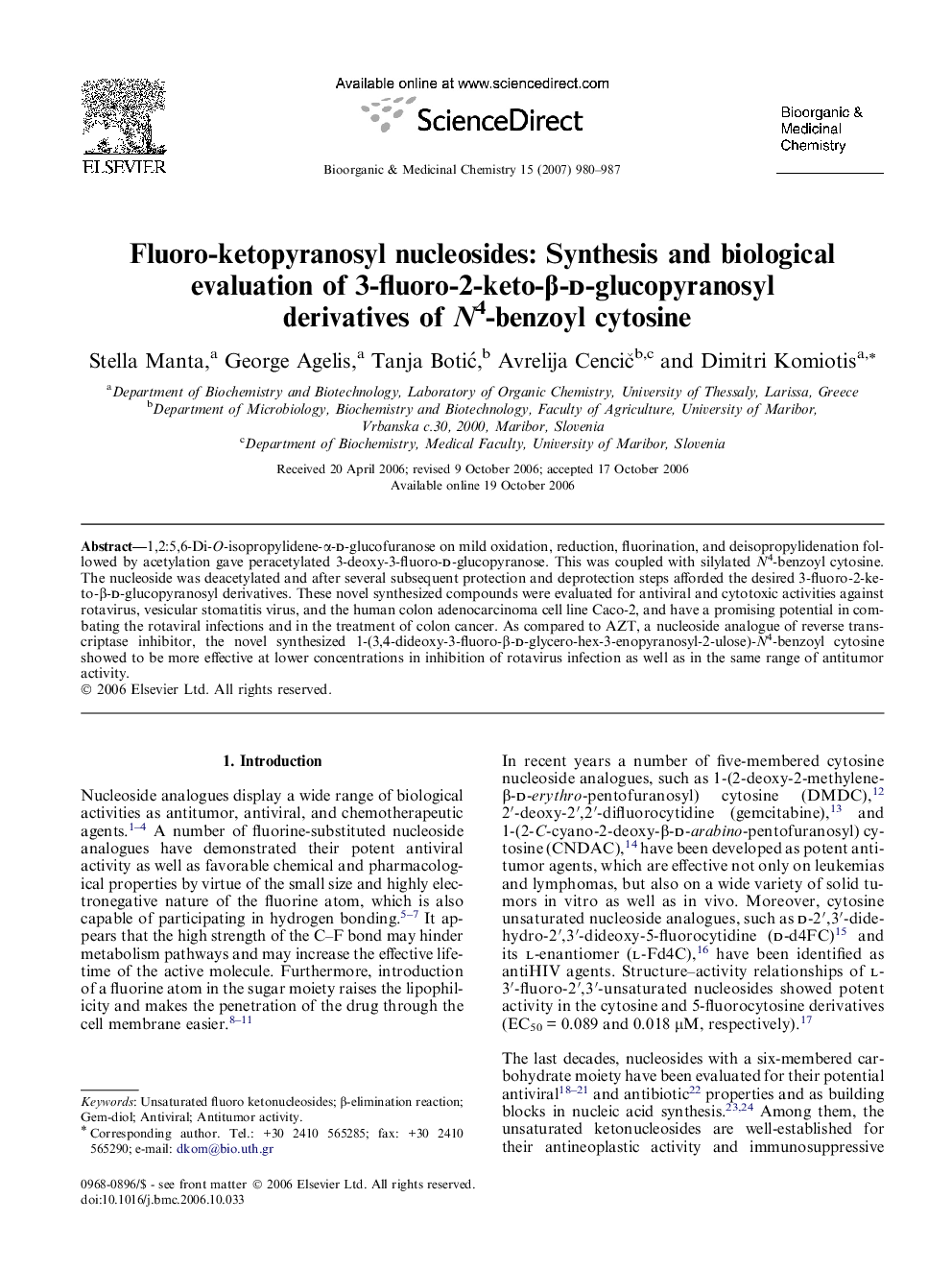| کد مقاله | کد نشریه | سال انتشار | مقاله انگلیسی | نسخه تمام متن |
|---|---|---|---|---|
| 1365120 | 981552 | 2007 | 8 صفحه PDF | دانلود رایگان |

1,2:5,6-Di-O-isopropylidene-α-d-glucofuranose on mild oxidation, reduction, fluorination, and deisopropylidenation followed by acetylation gave peracetylated 3-deoxy-3-fluoro-d-glucopyranose. This was coupled with silylated N4-benzoyl cytosine. The nucleoside was deacetylated and after several subsequent protection and deprotection steps afforded the desired 3-fluoro-2-keto-β-d-glucopyranosyl derivatives. These novel synthesized compounds were evaluated for antiviral and cytotoxic activities against rotavirus, vesicular stomatitis virus, and the human colon adenocarcinoma cell line Caco-2, and have a promising potential in combating the rotaviral infections and in the treatment of colon cancer. As compared to AZT, a nucleoside analogue of reverse transcriptase inhibitor, the novel synthesized 1-(3,4-dideoxy-3-fluoro-β-d-glycero-hex-3-enopyranosyl-2-ulose)-N4-benzoyl cytosine showed to be more effective at lower concentrations in inhibition of rotavirus infection as well as in the same range of antitumor activity.
We report the synthesis of three novel fluoro-ketopyranosyl nucleosides (compounds 8–10). These novel synthesized compounds have a promising potential in combating the rotaviral infections and in the treatment of colon cancer. As compared to AZT, compound 10 showed to be more effective at lower concentrations in inhibition of rotavirus infection as well as in the same range of antitumor activity.Figure optionsDownload as PowerPoint slide
Journal: Bioorganic & Medicinal Chemistry - Volume 15, Issue 2, 15 January 2007, Pages 980–987